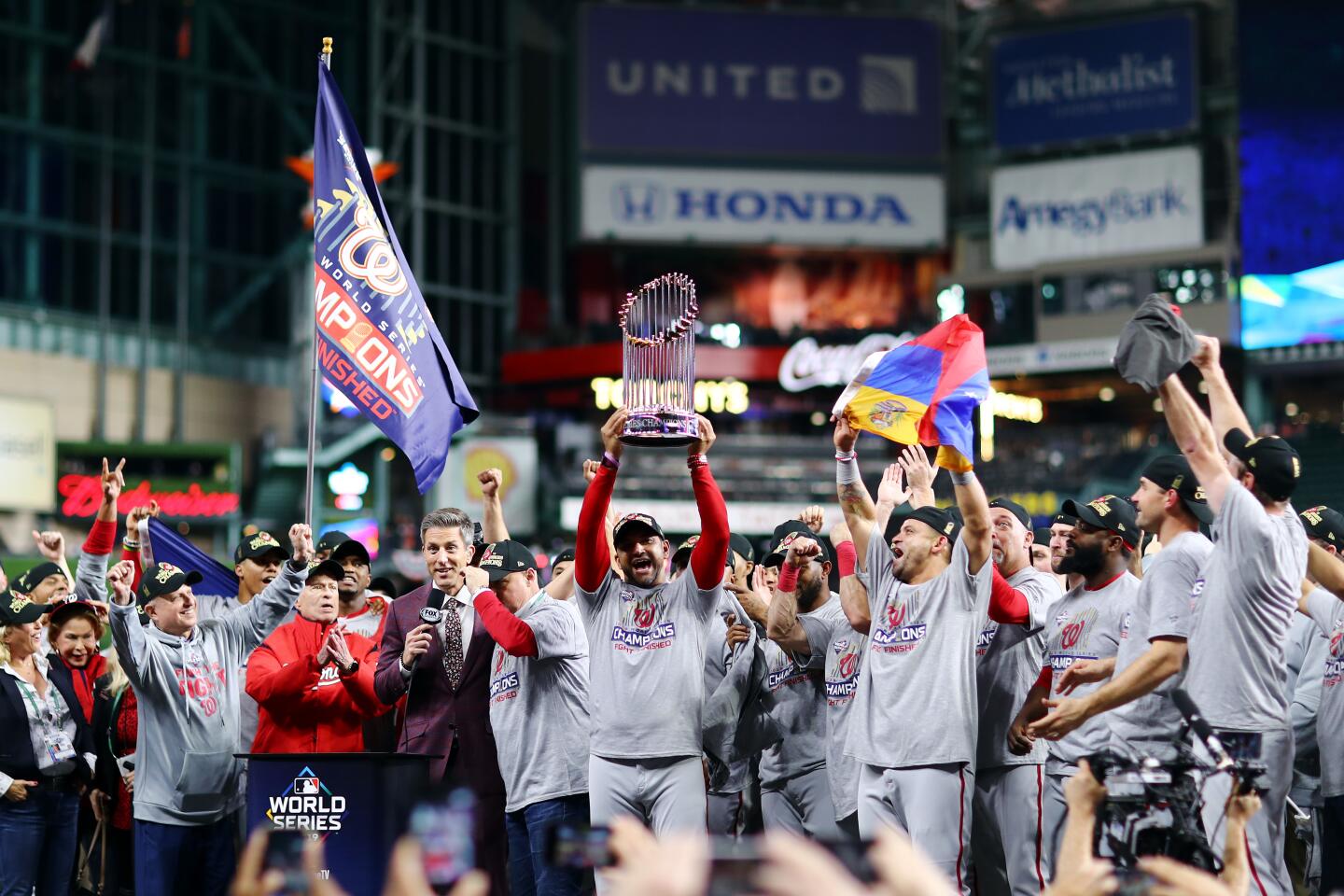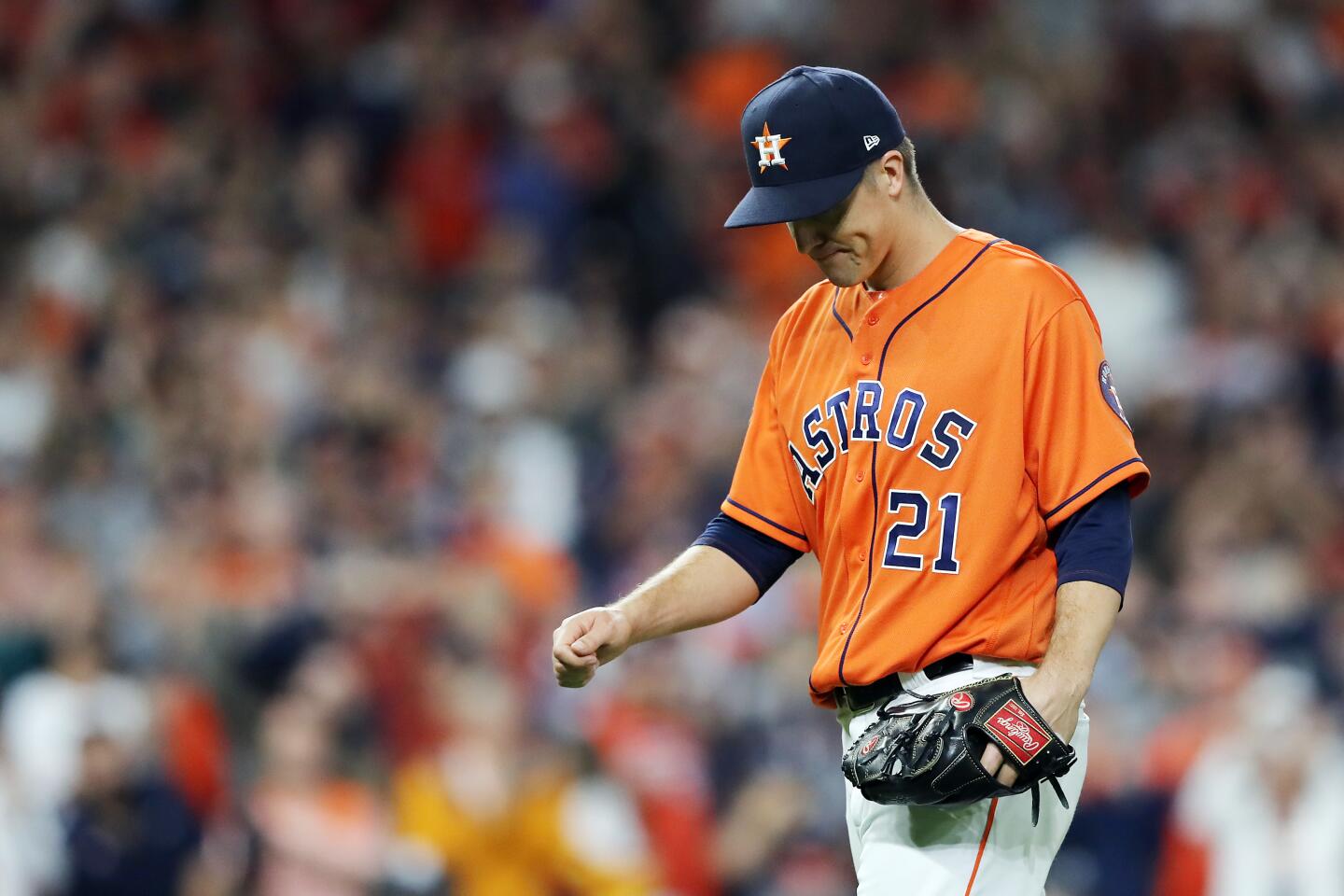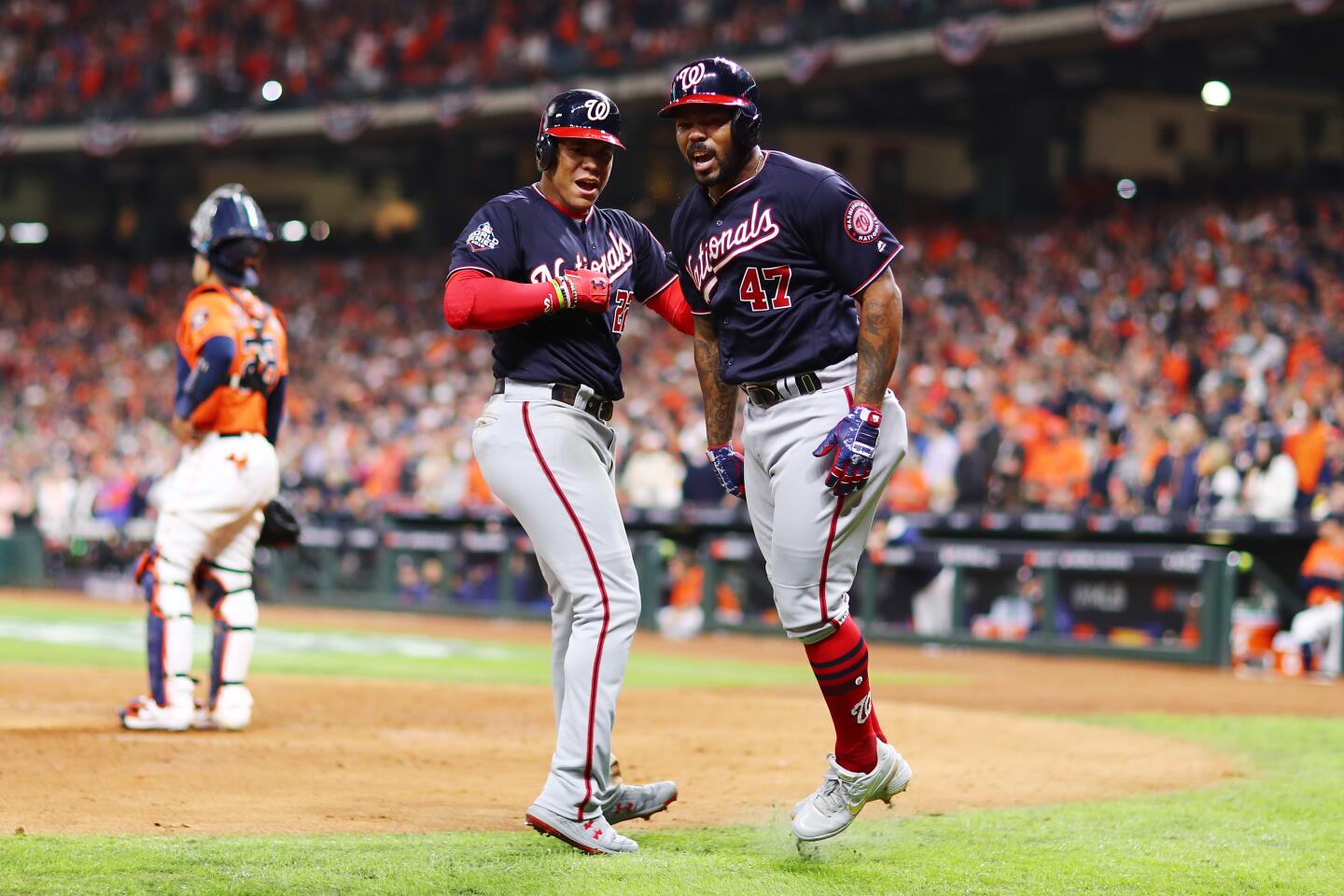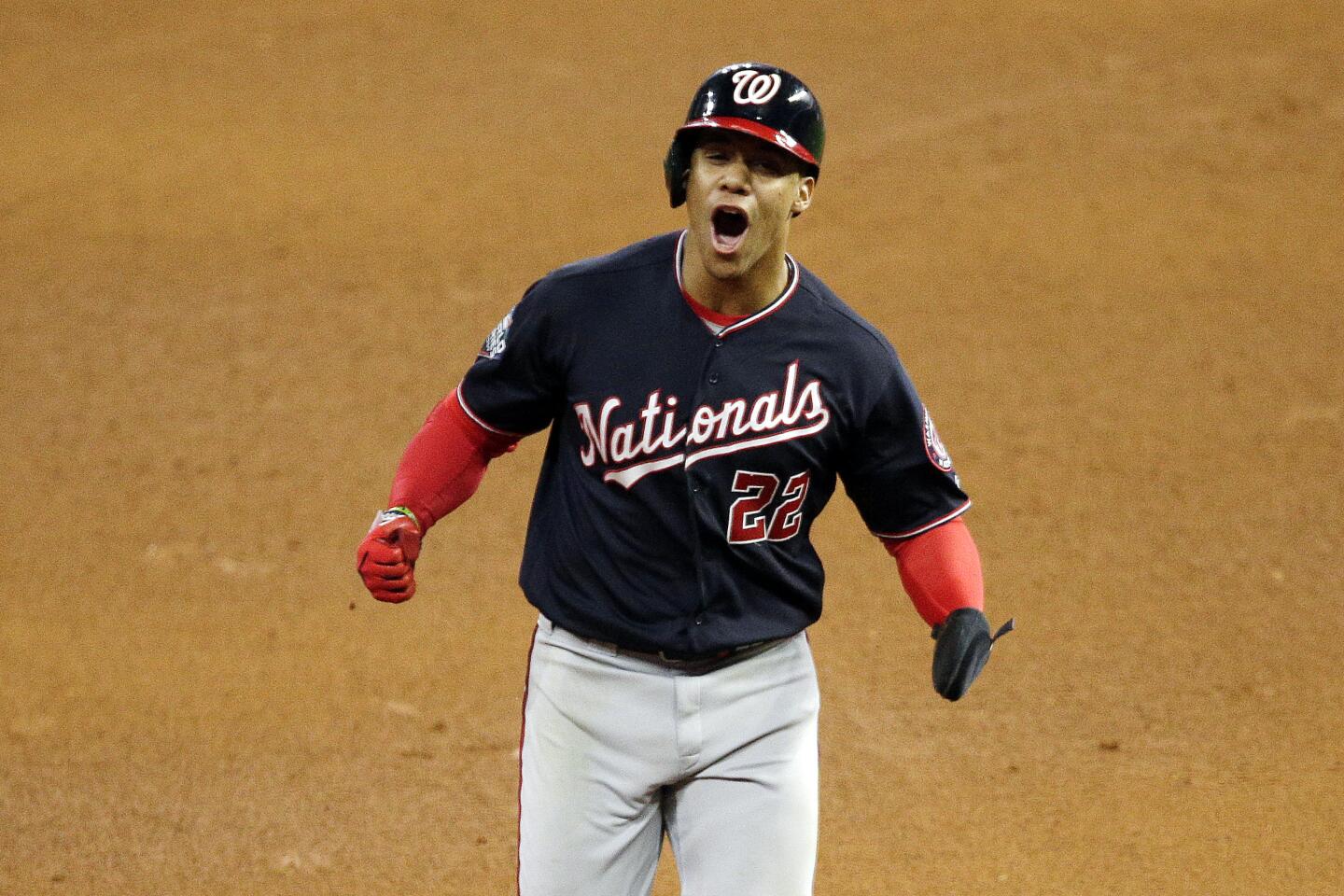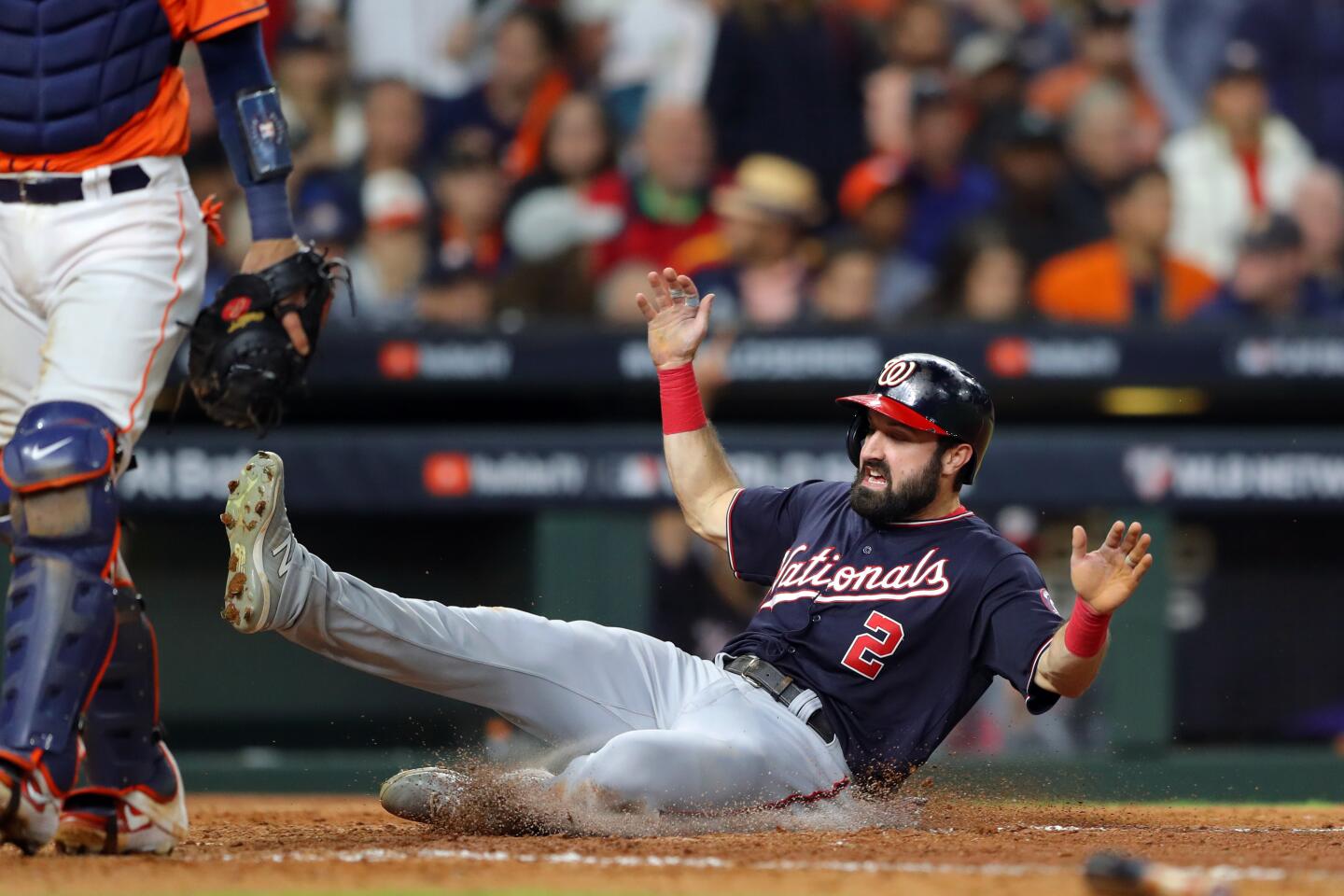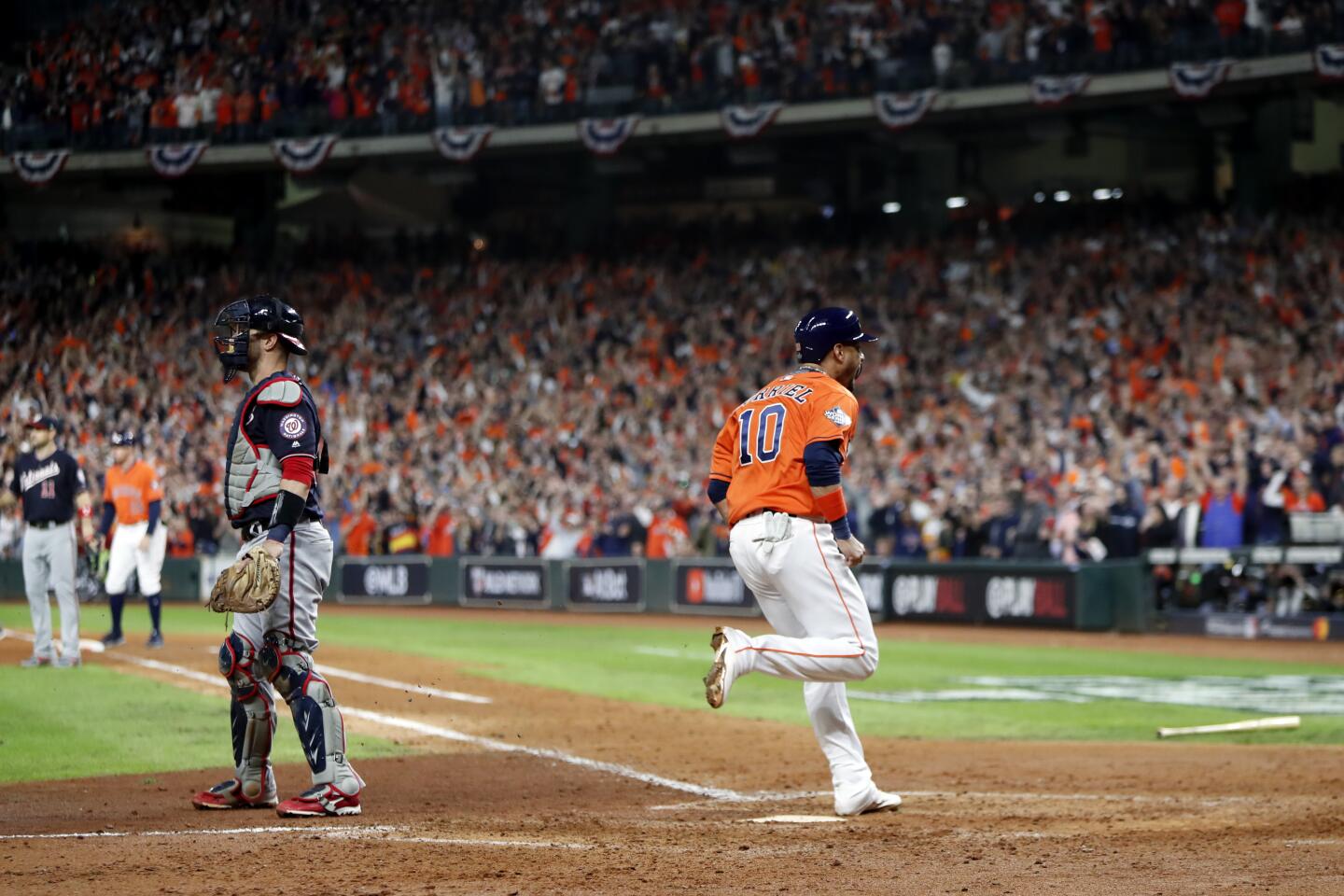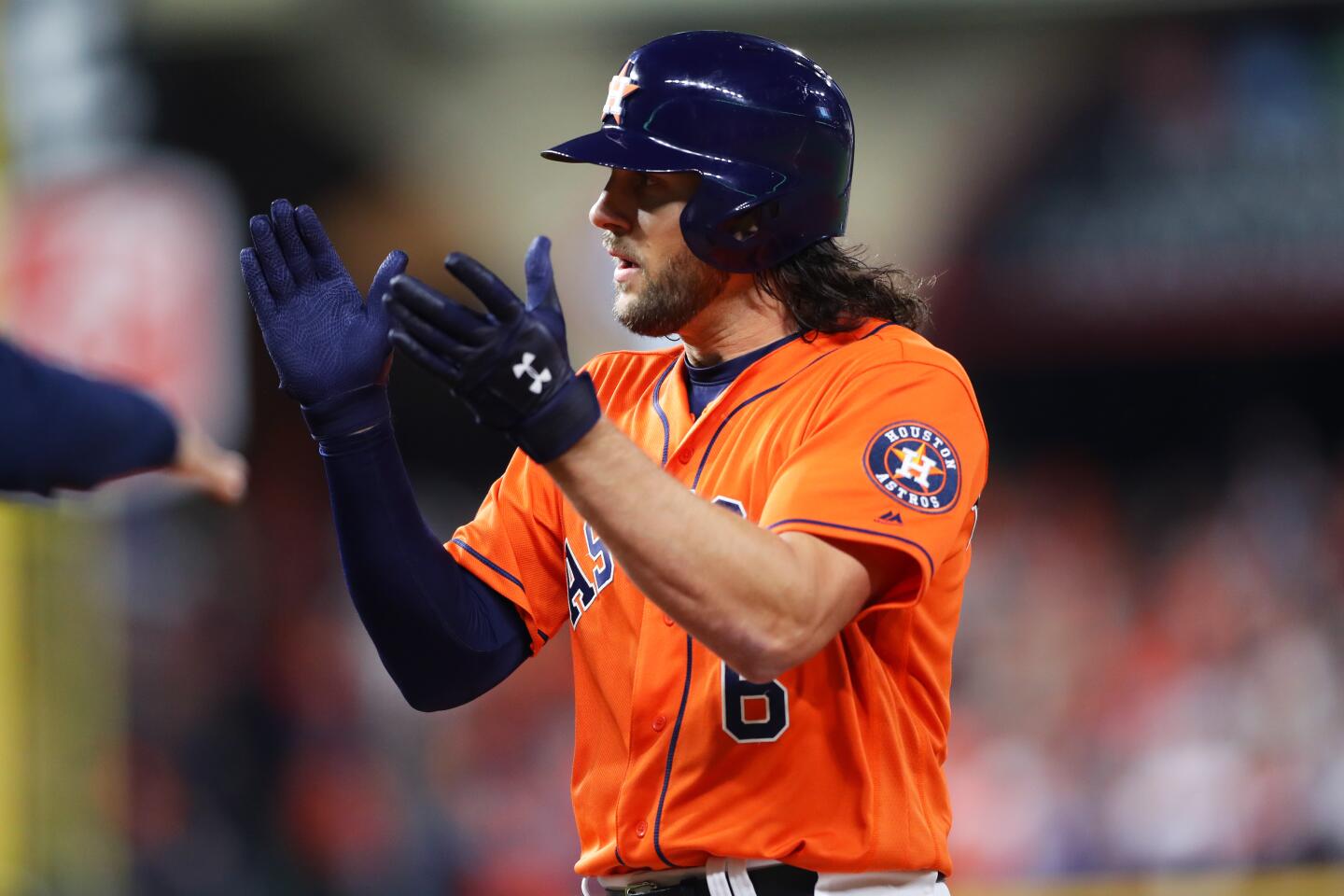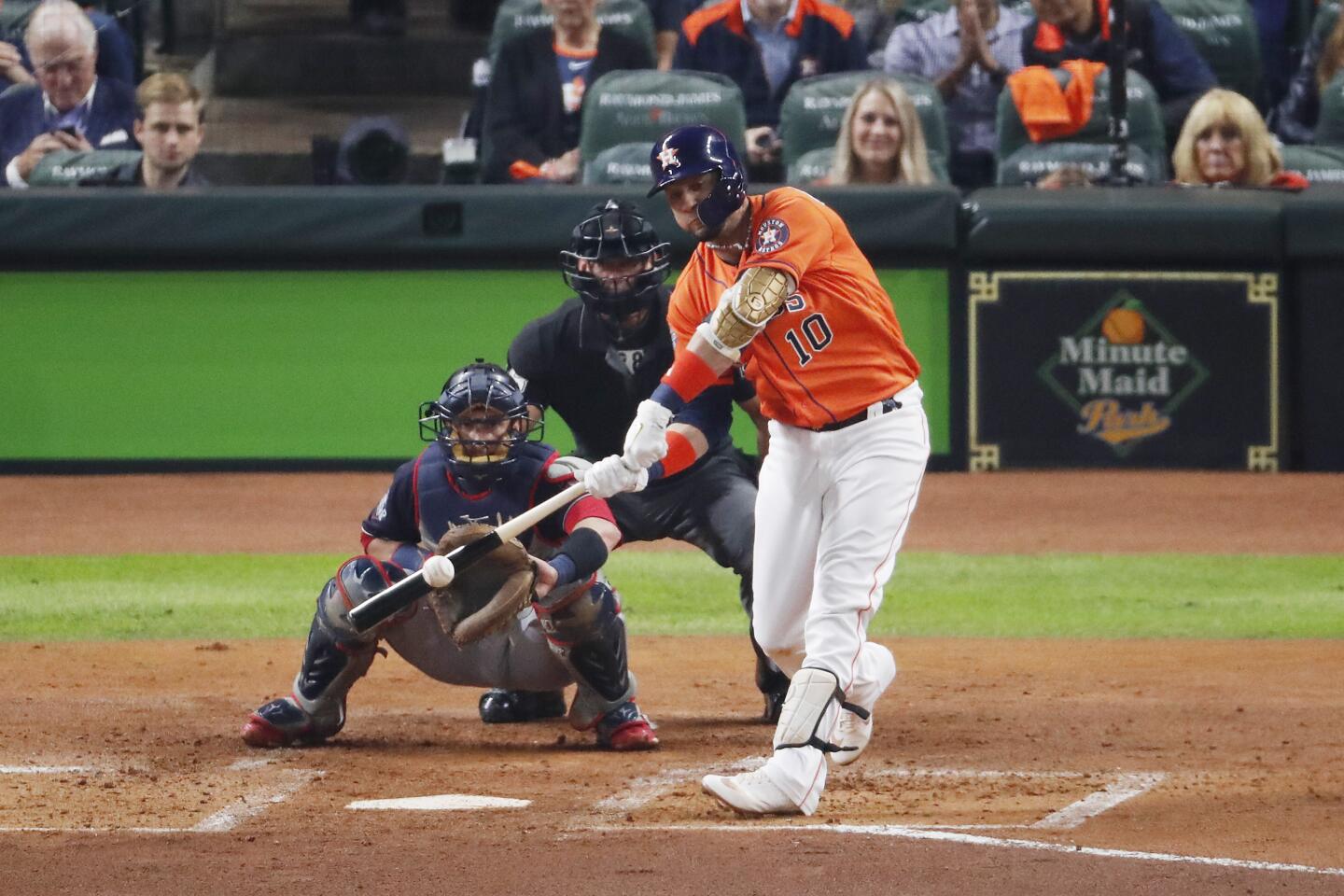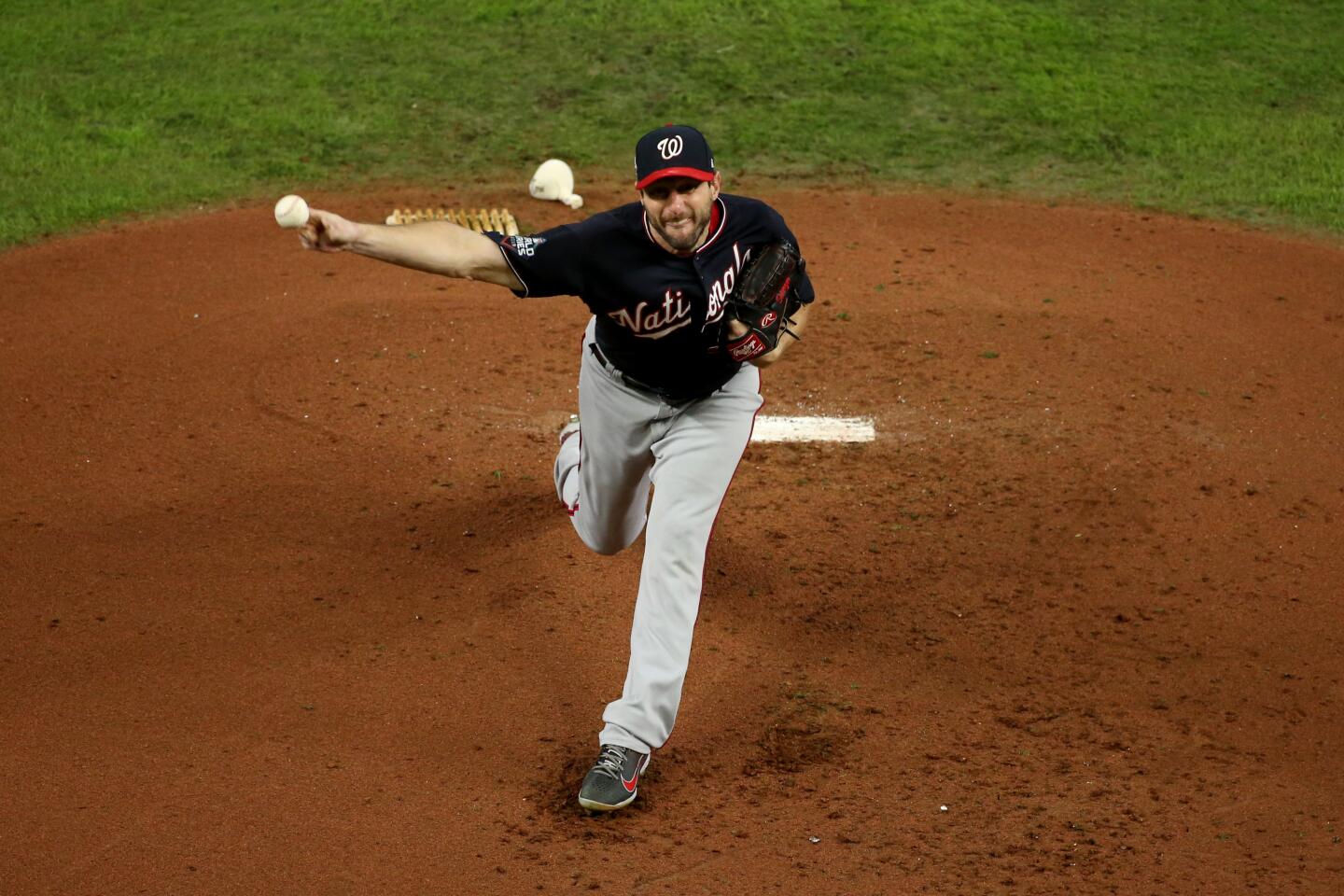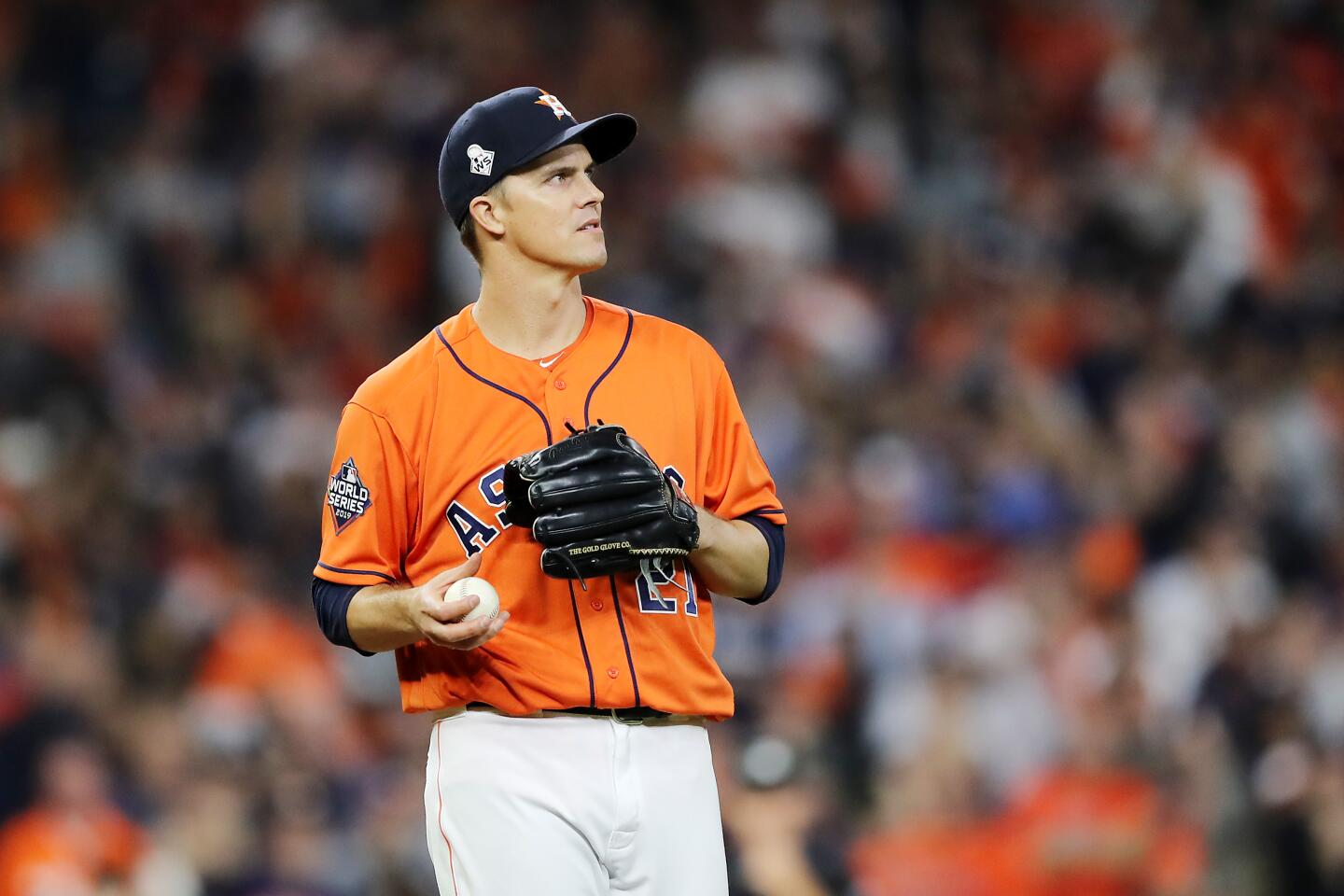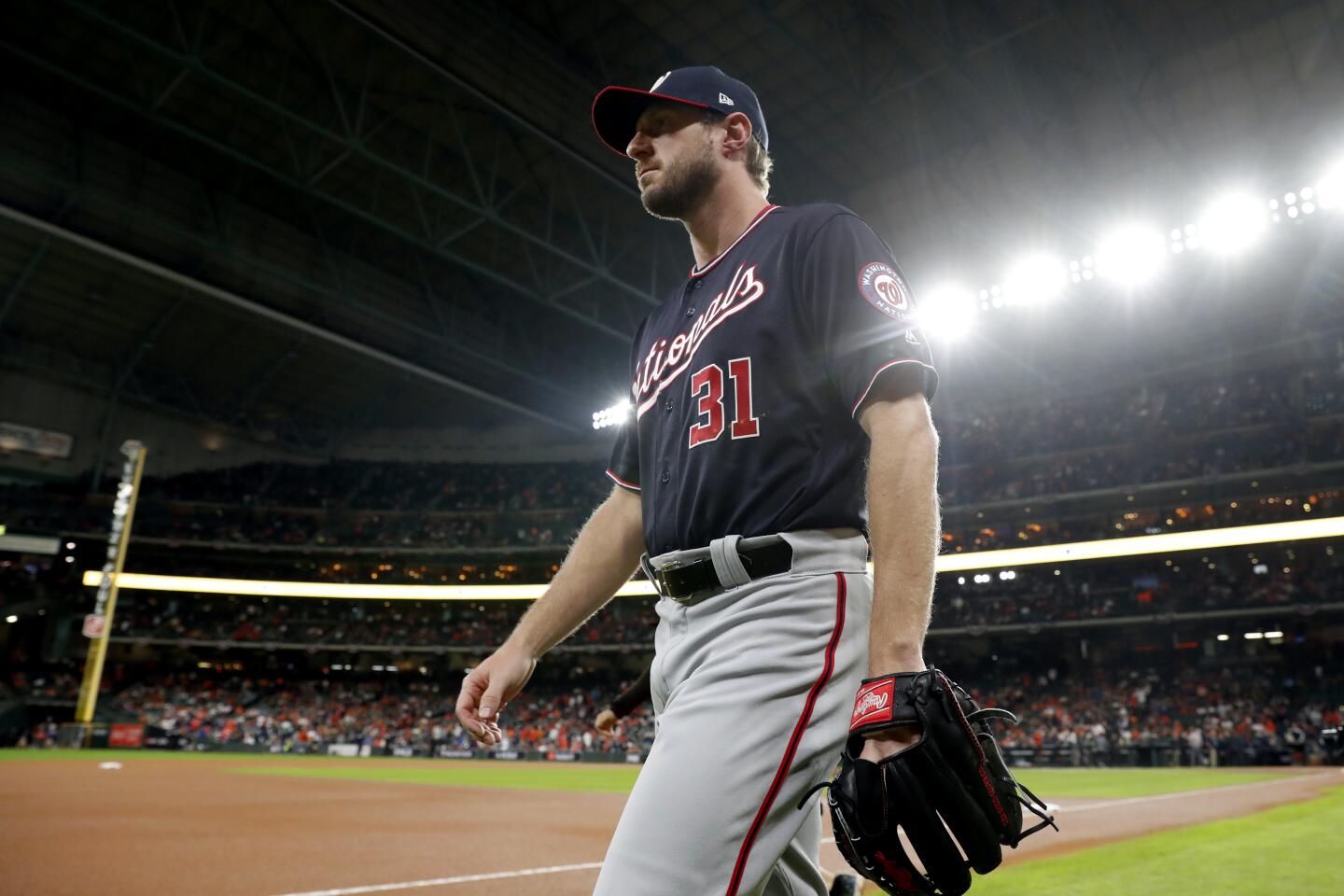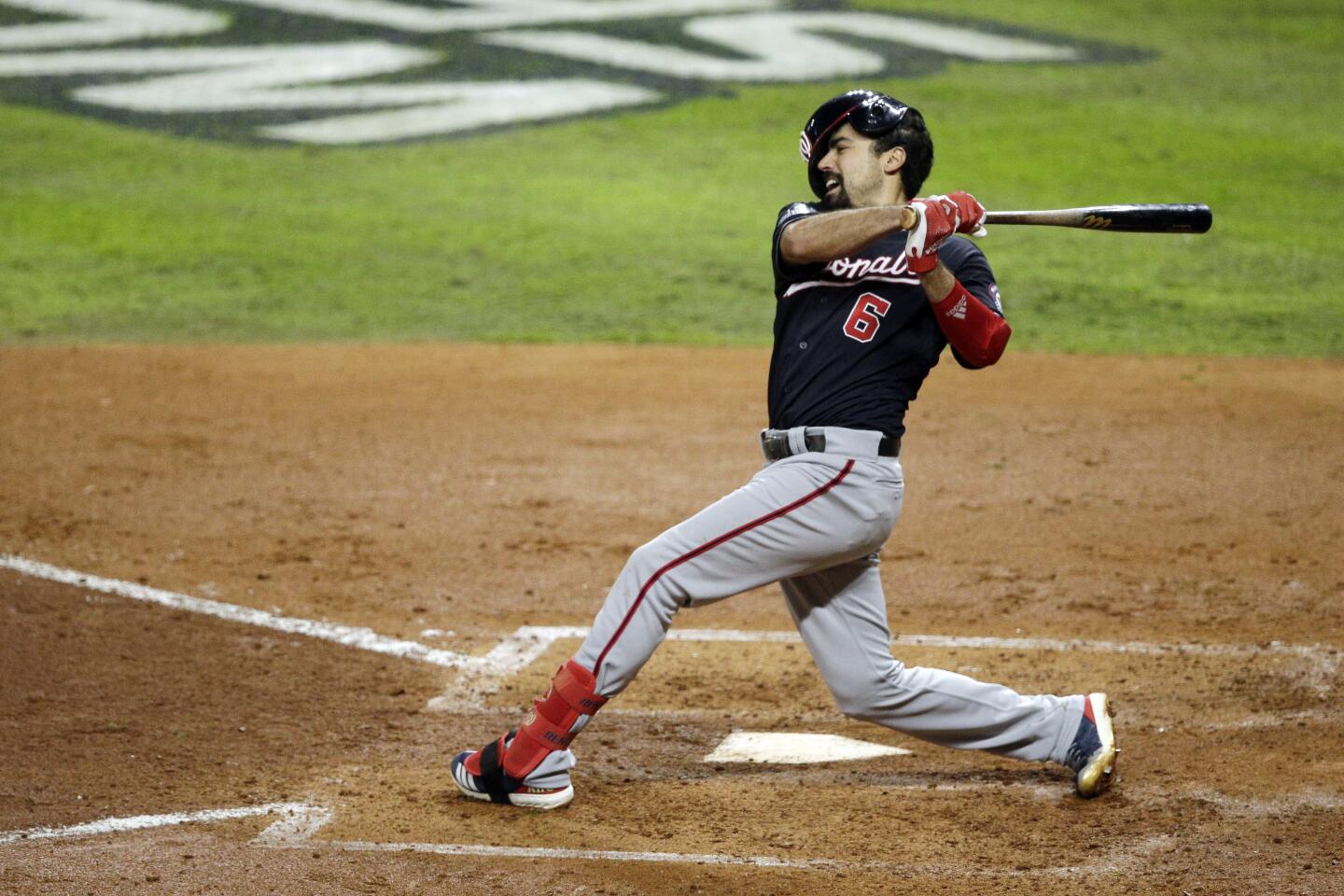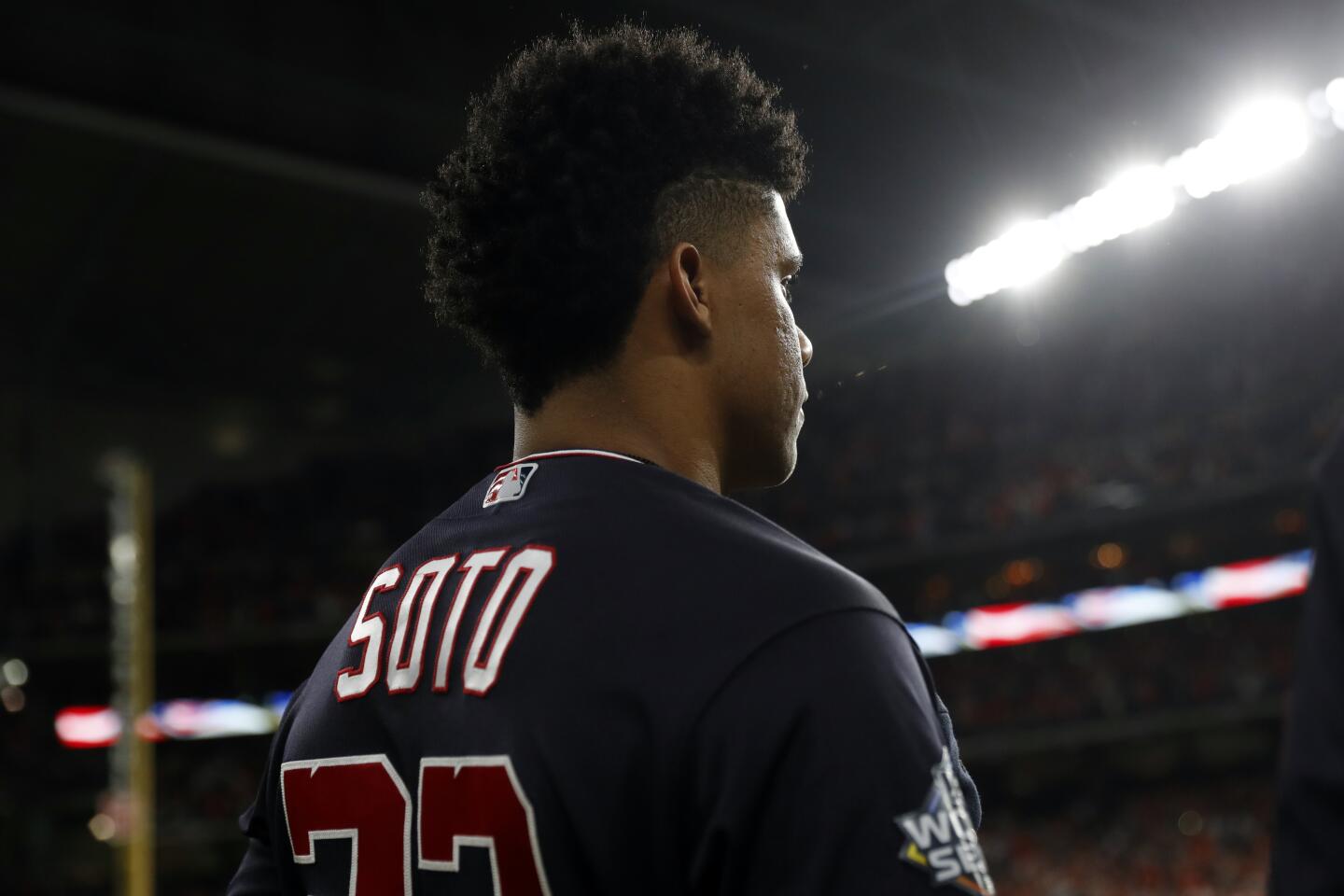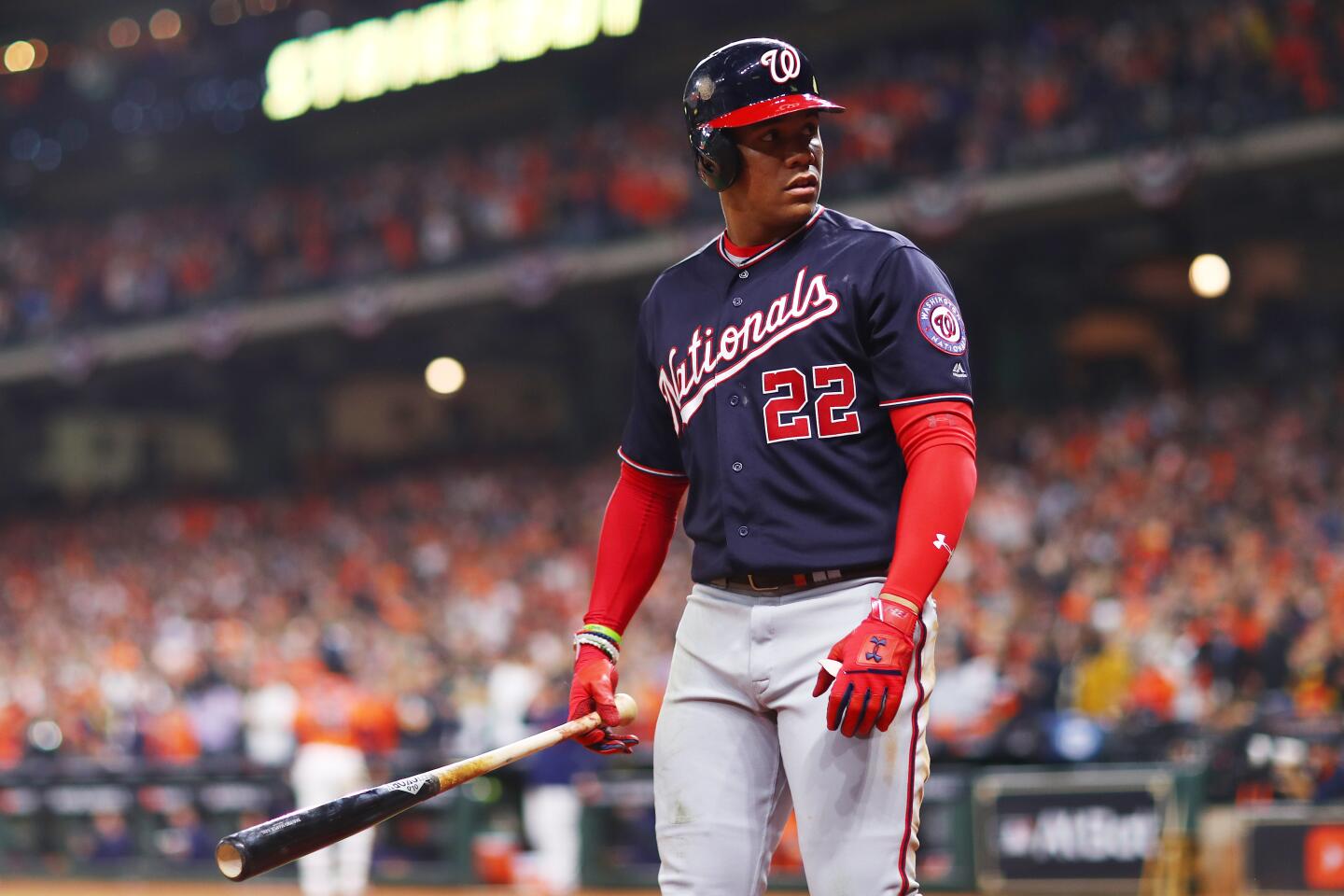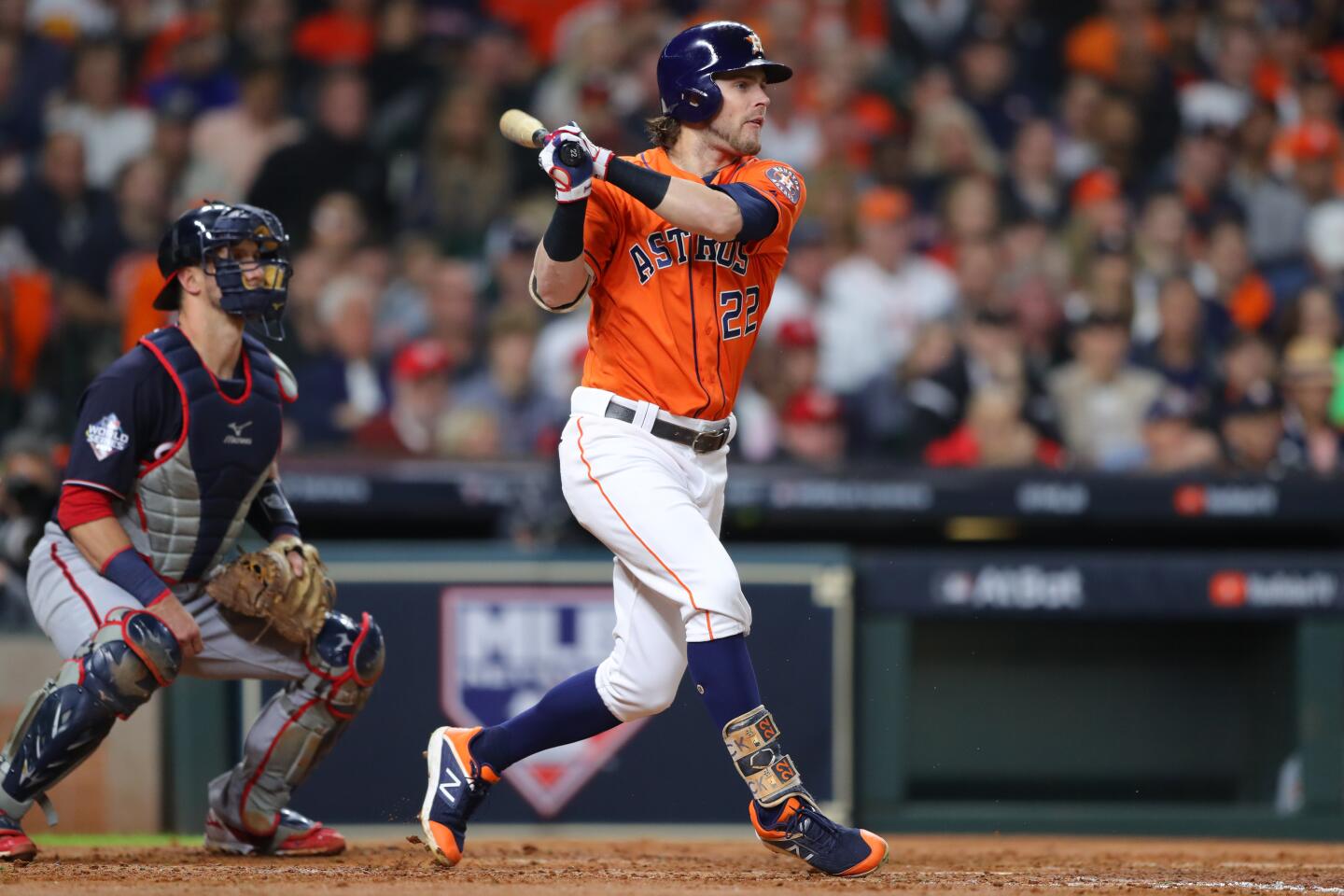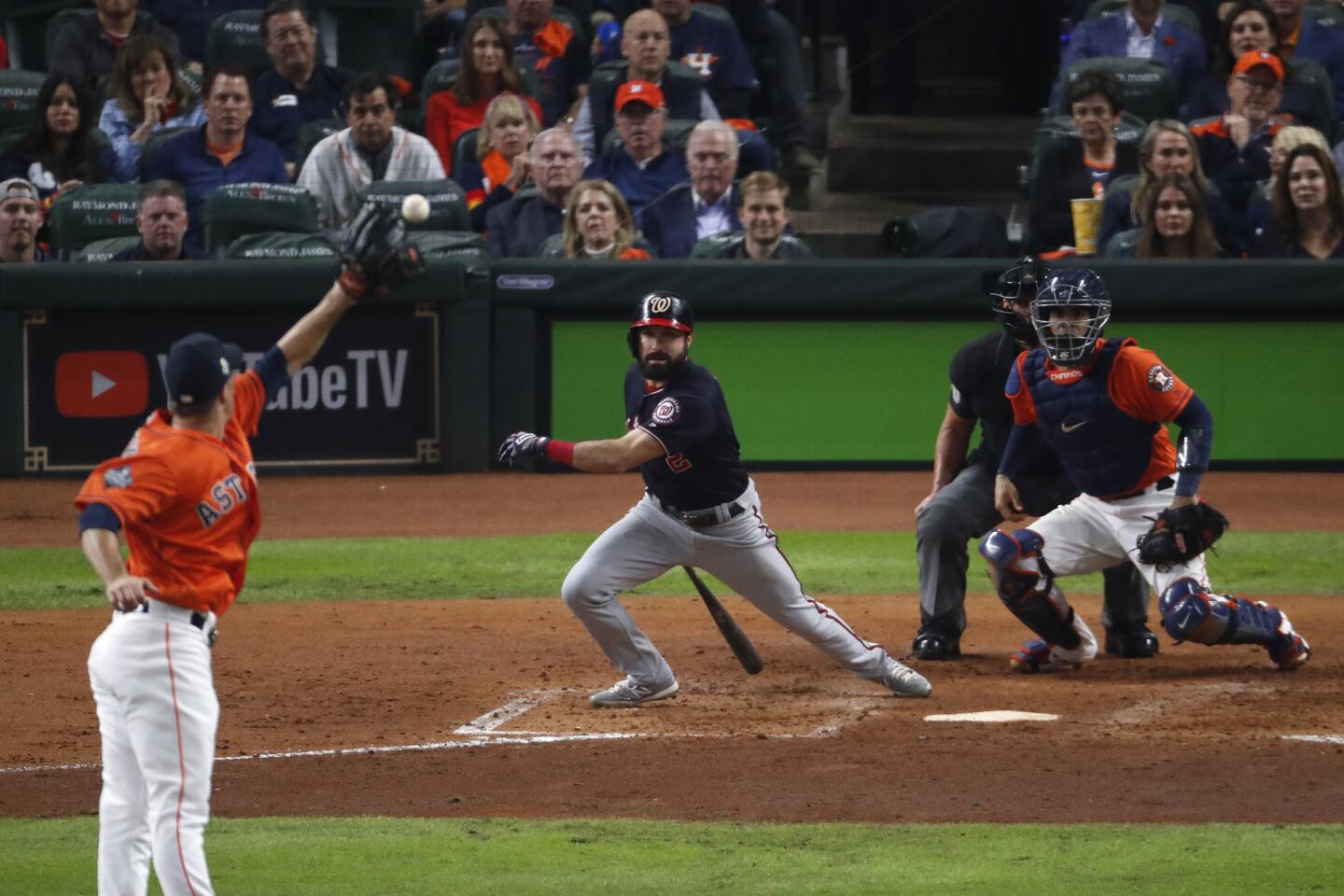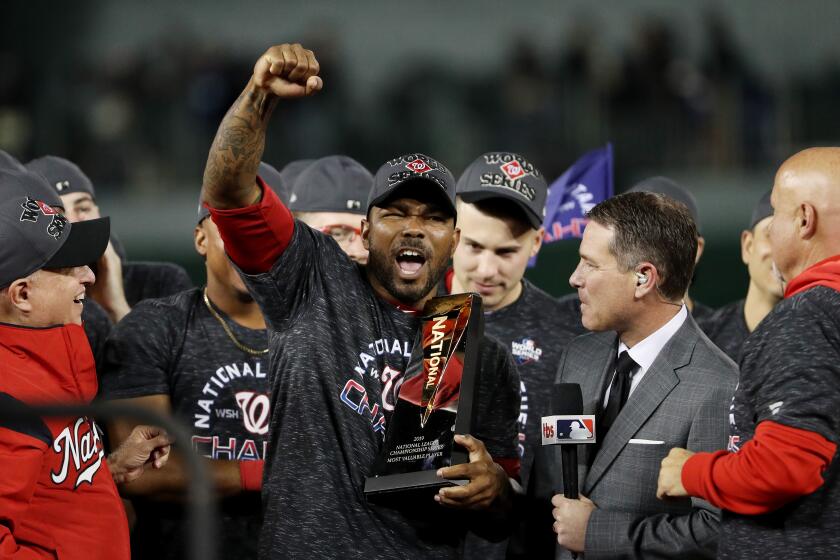What the Dodgers can learn from the Nationals’ World Series victory
- Share via
For the 31st straight season, a team other than the Dodgers held a championship parade Saturday. For the fourth consecutive season, it was a club that eliminated the Dodgers en route to hoisting the World Series trophy. This year, however, was a little different. This year, the World Series champions weren’t considered the favorites, or even one of them, when the tournament began.
The Washington Nationals did not dominate the regular season like the 2016 Chicago Cubs, the 2017 Houston Astros or the 2018 Boston Red Sox. Those clubs all won at least 101 games.
The National compiled 93 victories after a 19-31 start. They needed to survive the winner-take-all Wild Card game just for the right to face the 106-win Dodgers in the National League Division Series. They outlasted the Dodgers in five games, plowed through the St. Louis Cardinals, and toppled the 107-win Astros. They won their final eight road games and went 5-0 when facing elimination. It was a stunning dash to the first championship in franchise history.
“You have a great year, and you can run into a buzz saw,” Stephen Strasburg told reporters after Washington won the National League pennant. “Maybe this year, we’re the buzz saw.”
The Nationals were that team despite entering the postseason with the worst bullpen, by earned-run average, in playoff history. They worked around the deficiency by aggressively using their elite starting pitchers as relievers; six pitchers, four starters and two relievers, logged 127 2/3 of their 153 playoff innings. That’s 83.4%.
Letters to the L.A. Times sports editor
The lineup wasn’t as deep as some others, but it boasted Anthony Rendon and Juan Soto, perhaps the best one-two punch in baseball, in the middle with a supporting cast around them that produced in opportune spots.
Washington was not the best team on paper. But the 162-game marathon is not a foolproof indicator of the October sprint. Teams catch fire. Teams catch breaks. Some players step up in the moment and others succumb. In short, there is no infallible blueprint to win a World Series.
So figuring out why the Dodgers have not broken through and won a championship during their streak of seven straight division titles cannot be done with a broad brush. Each October is distinct. And this would not even be a conversation if Yu Darvish didn’t get blitzed early and the Dodgers won Game 7 of the 2017 World Series.
But two things can be gleaned from these playoffs. First, great starting pitching remains supreme. Bullpenning has emerged as an effective strategy in recent years, but riding workhouses is the most sustainable pitching approach in October. The Nationals and Astros, both featuring three front line starters, both showed that.
Secondly, the cookie-cutter style offensive approach that has surfaced in the analytics era — relying on home runs and walks while absorbing a high number of strikeouts — is a sound formula for the regular season, when the pitching infrequently reaches a high level, but doesn’t guarantee postseason success.
Dodgers closer Kenley Jansen will not opt out of his contract with two years and $38 million remaining on it, according to a person with knowledge of the situation.
The Nationals did not solely rely on walks and home runs. They bunted runners over, stole bases and didn’t strike out at a high rate. They hit the ball the other way, deliberately countered shifts and manufactured runs. Players adjusted when necessary. They were diverse in their attack. Even the Astros, baseball’s analytical darlings, stole 11 bases and struck out fewer than nine times per game.
The Dodgers failed to consistently execute in their five playoff games against the Nationals’ elite pitching. They racked up 64 strikeouts, or 12.8 per game. Corey Seager went 3 for 20 with eight strikeouts and is a .203 career playoff hitter in 131 plate appearances. Cody Bellinger finished 4 for 19 with seven strikeouts and is a .178 hitter in 145 career postseason plate appearances.
Justin Turner and Max Muncy were the only everyday players to excel in the series. A few of the Dodgers’ biggest hits came from David Freese and Russell Martin, two veterans in their mid-30s who made one start each. The sample is small and luck is a factor. But the results are the results, and they weren’t good enough for Los Angeles for a seventh straight year.
“I think it’s on all of us,” Dodgers president of baseball operations Andrew Friedman said last month. “But I think human nature is to want to be the hero, which I totally understand. But it’s that in October, I think pitchers feed off that.”
The World Series showcased three impending free agents that could help the Dodgers.
Rendon, a 29-year-old third baseman, should be the most attractive position player on the market. He is a plus defender who overcame injury-plagued seasons early in his career to become an MVP candidate this season.
Strasburg, the World Series MVP, is expected to opt out of his contract. The 31-year-old right-hander allowed eight earned runs across 36-1/3 playoff innings, good for a 1.98 ERA, with 47 strikeouts and four walks. Strasburg could decide to re-sign with the Nationals without testing free agency like Clayton Kershaw did with the Dodgers last year.
Gerrit Cole, meanwhile, is unlikely to return to Houston. The 29-year-old right-hander led the American League with a 2.50 ERA and the majors with 326 strikeouts during the regular season. The UCLA product and Newport Beach native gave up seven earned runs in 36-2/3 postseason innings across five starts.
The Dodgers would need to figure out where Rendon fits with third baseman Justin Turner under contract for another season. Signing Strasburg or Cole wouldn’t present that complication. One of them would solidify a starting rotation that could lose Hyun-Jin Ryu and Rich Hill to free agency. This postseason proved the more aces you have, the better your chances to prevail are. But nothing guarantees becoming the October buzz saw.
More to Read
Go beyond the scoreboard
Get the latest on L.A.'s teams in the daily Sports Report newsletter.
You may occasionally receive promotional content from the Los Angeles Times.
